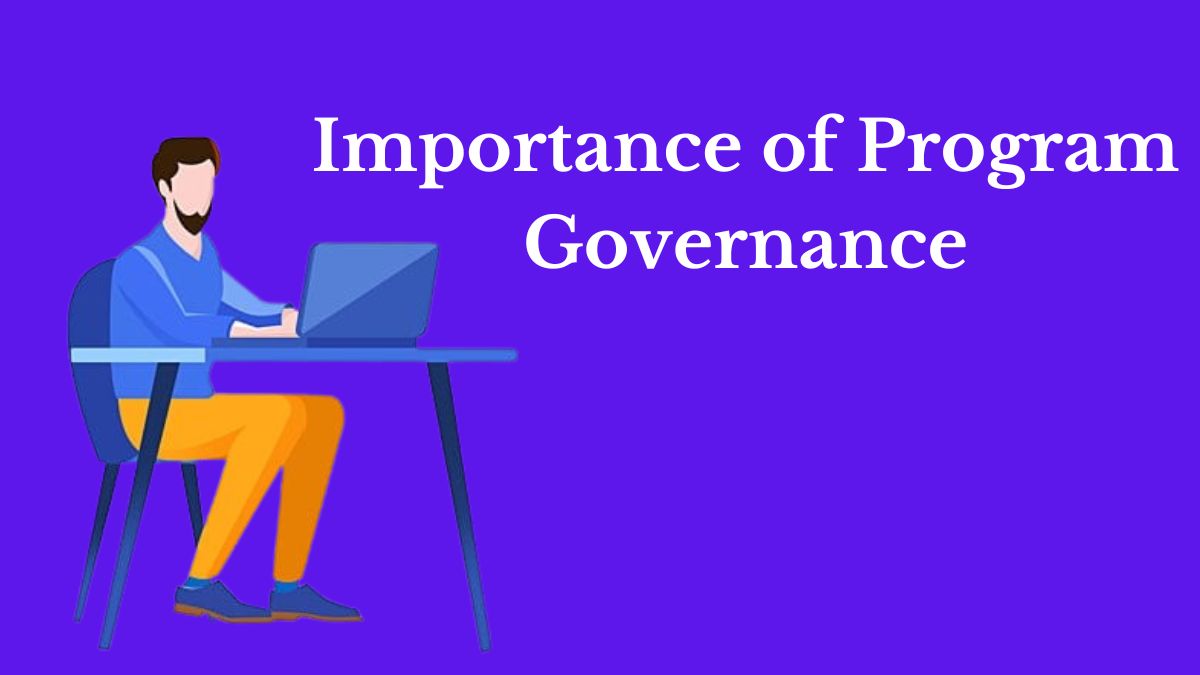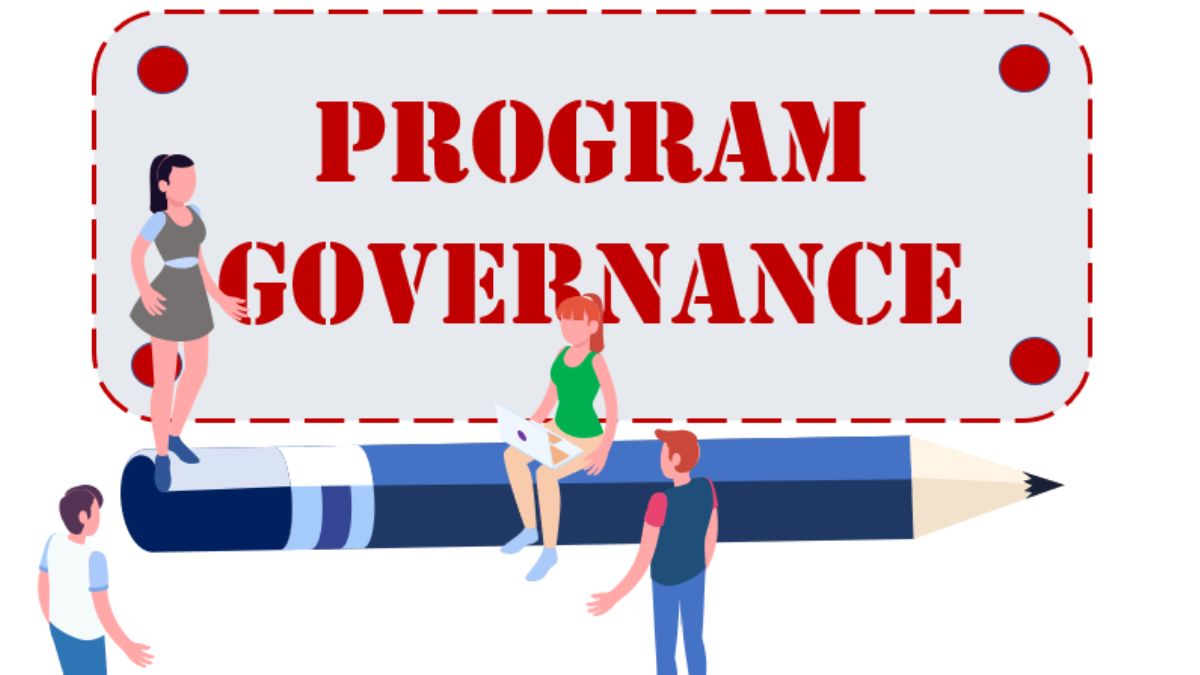Program Governance: Effective Strategies & Best Practices 2024
You’ve likely heard the term “program governance” flitting around the business world. But what does it really mean? And why should you care? As it turns out, it’s a vital cog in the machinery of any successful organization.
Program governance is the linchpin that holds projects together, ensuring they’re aligned with an organization’s strategic objectives. It’s the guiding light that navigates the choppy waters of business, steering projects towards their desired outcomes.
So, whether you’re a seasoned pro or a newbie dipping your toes into the corporate pool, understanding program governance is a must. Let’s delve deeper into this fascinating topic and discover why it’s the secret sauce to business success.
What do you Understand by Program Governance?
Building on the introduction of the concept and its importance in the business ecosystem, it’s time to delve deeper into the crux of program governance.
The Basic Concept
At its core, program governance provides a structured roadmap that drives initiatives towards strategic objectives, steering them towards successful conclusions. By setting clear responsibilities, it ensures smooth operations and minimizes risks associated with the execution of tasks. For example, in an IT project, the program governance might dictate specific protocols for coding, testing, and deployment, minimizing potential errors and ensuring quality output.
Key Components and Structures
Program governance doesn’t exist in isolation. Instead, it crucially relies on multiple components and structures that work together like cogs in a machine. In this section, I am specifically going to detail three primary components: the governance framework, steering committee, and procedures and guidelines.
- Governance Framework: The governance framework sets the stage for program governance. It outlines the overall operation procedure and specifies distinct roles and responsibilities. For example, in an event management firm, it identifies who is responsible for venue selection, vendors, ticketing, and promotions.
- Steering Committee: The steering committee often acts as the driving force in program governance. Comprising key stakeholders, this committee makes impactful decisions, monitors program progress, and facilitates resource allocation. In other words, they’re in the driver’s seat, making the critical calls.
- Procedures and Guidelines: Procedures and guidelines serve as the nuts and bolts of the governance model. From procurement to employee management, these procedures ensure consistency, establish standards, and keep everyone in the loop regarding how tasks should be executed. For instance, a restaurant might have specific guidelines for food handling, hygiene standards, and customer service protocols.
Together, these components form the backbone of an effective program governance model. Familiarize yourself with each, understand their mutual dependencies, and you’re well on your way to mastering the art of program governance.

Importance of Program Governance
To build on the knowledge of program governance outlined previously, I’ll unpack the importance of this integral aspect. It goes beyond the fundamental components and interdependencies, focalizing on three key pillars of significance – strategic alignment, effective decision making, and accountability & transparency.
Strategic Alignment
A chief benefit of program governance lies in its indispensability for strategic alignment. Consider it as the compass in an organization’s journey, ensuring that every initiative aligns with the overarching strategy. For instance, if a company aims to expand its market share, program governance helps ensure that each project contributes to that goal. Be it launching a marketing campaign or developing a new product, the governance framework verifies alignment with the strategic goal before sanctioning resources or greenlighting projects.
Effective Decision-Making
Program governance also enhances effective decision-making within an organization. This enhancement happens as it establishes clear guidelines and procedures. For instance, a governance framework might set strict approval processes for project budgets, ensuring that funds get allocated effectively. Furthermore, by creating a steering committee, the framework ensures that every decision involves the inputs of knowledgeable and experienced professionals. This collective decision-making not only maximizes the chance of success, but it also makes the decision progression swift and accurate.
Accountability and Transparency
Lastly but certainly not least, program governance fosters a climate of accountability and transparency within organizations. By laying out each person’s role clearly, it establishes who’s responsible for what, avoiding the ‘blame game’ if things go wrong. Accountability implies ownership – if a project fails to deliver, the person or team responsible can’t shift the blame elsewhere. Simultaneously, governance procedures ensure transparency, as all relevant processes, decisions, and systems are open for scrutiny. For example, a project’s progress reports are accessible to all stakeholders, ensuring they are on the same page and aware of developments.
In essence, program governance acts as the linchpin holding together strategic alignment, rigorous decision-making and accountability, bolstering the organization’s efficacy and sustainability in the long run.
Best Practices in Program Governance
Taking a closer look at the finer elements of program governance, I’d like to furnish some best practices. These recommendations build on the previously discussed concepts, accentuating the relevance of clear roles, robust policies, and constant monitoring.
Establishing Clear Roles and Responsibilities
The first step towards enhancing program governance revolves around the crucial task of defining roles and responsibilities. An essential aspect of any program governance setup comprises outlining the roles for all involved personnel. Examples of this: project managers, team leads, or steering committee members. Utilize a RACI chart (Responsible, Accountable, Consulted, and Informed) to delineate these roles, give clarity, and avoid confusion. I must point out that this doesn’t just improve accountability, it also streamlines the decision-making process, given everyone knows their responsibilities.
Implementing Robust Policies and Procedures
The second component of fortified program governance involves the establishment and enforcement of robust policies and procedures. I consider these as the lifelines of your governance structure. They maintain the pulse of the organization, keeping functions alive, kicking, and in sync with the strategic vision. Moreover, these procedures act as the playbook showing how things get done, what gets done, and who does it. For instance, project management methodologies like Agile or Scrum can align your operational practices with your strategic goals. This alignment invariably leads to an increase in productivity, ensuring that projects align with the overall strategic goals.
Regular Monitoring and Reporting
The third and final best practices in program governance are regular monitoring and reporting. Plainly put, it’s the idea of routinely reviewing the progress of your projects and reporting on relevant metrics. Tools like a Program Control Board (PCB) help keep an eye on performance indicators, efficiency parameters, and the program’s strategic alignment. As I see it, constant monitoring provides real-time visibility into project status, enhancing decision-making capabilities. Reporting, in turn, helps keep stakeholders in the loop, fostering an environment of transparency and openness. Therefore, regular monitoring and reporting are not just advisable, they are absolute necessities in program governance.
Common Challenges in Program Governance
Program governance, although crucial to organizational coordination, presents several hurdles that I’d like to delve into. These challenges range from navigating complex stakeholder landscapes to managing change and transformation, as well as ensuring compliance and overcoming resistance.
Navigating Complex Stakeholder Landscapes
One of the primary challenges in program governance is dealing with numerous stakeholders, each wielding different levels of influence and holding varying interests. These stakeholders, usually staff from diverse departments or external partners, can bring about demanding intricacies. Specifically, these complications can come from different expectations, contrasting objectives, and discrepant communication paths. For instance, sales might push for swift product roll-out for market advantage, while software development insists on more time for optimal testing. Harmonizing these competing demands often proves an uphill task but is a crucial aspect of effective program governance.
Managing Change and Transformation
Initiating change or transformation within a traditional organization is another hurdle that program governance faces. Altering deeply entrenched habits, workflows, and mindsets places significant pressure on every level of the organization. For example, a shift towards a data-driven culture may require new data management systems. This change process can disrupt standard operations and needs meticulous planning, clear communication, and continued support from top leadership to be successful. Despite being tough, such transformations are essential for continuous improvement and help stay ahead in the competitive business world.
Ensuring Compliance and Overcoming Resistance
Ensuring compliance with industry-specific regulations and internal policies while overcoming resistance within the organization is another common challenge. Employees might resist the policies that stretch their standard operating procedures or demand a change in their well-established workflows. For example, a new governance rule demanding rigorous documentation might face opposition from teams accustomed to informal communication channels. Overcoming such resistance and driving compliance often necessitates a judicious mix of training, communication, and sometimes firm management actions.
While challenging, each of these potential hurdles can be managed effectively—setting the stage for improved communication, efficient change management, and reinforced adherence to policies. They make program governance a sturdy pillar supporting the organization’s strategic objectives and providing a path towards success.

Case Studies: Program Governance in Action
Having plunged into the depths of program governance, let’s examine real-world applications. Providing examples through case studies reveals the tangible impact of program governance within organizations.
Success Stories
Successful program governance isn’t hypothetical; it shows its might in organizations that navigate change effectively. Let’s consider the success of Microsoft’s Azure Migration Program (AMP).
AMP serves as a prime example of well-orchestrated program governance. Microsoft structured a clear roadmap, formed a steering committee with representatives from various sectors, and implemented well-defined procedures. This framework offered the company a systematic way of moving its services to cloud. The altogether impact? Reduction of 50% programming errors and 30% cost savings, as reported by Forbes.
Another case highlighting how strategic alignment guides success is Volvo. Their Electric Vehicle (EV) transition illustrates exceptional program governance. Through precise decision-making structures, they aligned their projects with the strategic goal of sustainability. The result? According to the Financial Times, over 50% of their cars sold in 2020 were electric or hybrid – a historical advancement towards their commitment of being climate neutral by 2040.
Lessons Learned from Failures
However, program governance isn’t always smooth sailing – missteps offer valuable lessons. Take Nokia, once a leading phone manufacturer; due to unclear roles and responsibilities within its program governance, it struggled to steer strategic alignment. As stated in the Harvard Business Review, weak technological decisions and managerial complexities saw a significant market share loss to competitors.
Dewey & LeBoeuf’s dramatic collapse informs about the hazards of disregarding transparency in decisions and operations. The New York Times documents that financial mismanagement and lack of accountability, key failings of their program governance, escalated into one of the biggest law firm bankruptcies in history.
In these instances, the absence of effective program governance brought setbacks. The lessons? Clear roles and responsibilities, transparent procedures, and regular monitoring are paramount to ward off organizational disaster.
Conclusion
Program governance isn’t just a buzzword – it’s a vital ingredient for organizational success. It’s the compass that helps align projects with strategic goals, creating a roadmap for initiatives. From Microsoft’s Azure Migration to Volvo’s Electric Vehicle transition, we’ve seen how clear roles, transparent procedures, and regular monitoring can drive successful outcomes. On the flip side, we’ve also learned from Nokia and Dewey & LeBeouf’s missteps, where unclear roles and lack of transparency led to their downfall. So,
let’s not underestimate the power of effective program governance. It’s not just about managing projects – it’s about ensuring accountability, fostering transparency, and making informed decisions that push us closer to our strategic goals. Remember, the success of your organization could very well hinge on how well you govern your programs.
Frequently Asked Questions.
What is program governance?
Program governance is a crucial element for organizational success. It helps align projects with strategic goals and provides a structured roadmap for initiatives within an organization.
Why is strategic alignment important in program governance?
Strategic alignment in program governance ensures that all initiatives and projects are in line with the organization’s overall strategic goals. This alignment fosters a cohesive and directed approach to achieve success.
What are the critical components of program governance?
The critical components of program governance include the governance framework, steering committee, and various procedures. These components help structure and drive successful outcomes within organizational programs.
How does program governance promote accountability and transparency?
Program governance fosters accountability and transparency by defining clear roles, responsibilities, and procedures. Regular monitoring and stringent guidelines ensure every action can be traced back to its origin, thereby promoting transparency.
What are some examples of successful program governance implementations?
Examples of successful program governance implementations include Microsoft’s Azure Migration Program and Volvo’s Electric Vehicle transition. In both examples, strong governance played a key role in aligning strategic goals and driving success.
What are some instances where program governance failed?
Some instances where program governance failed include Nokia and Dewey & LeBoeuf. Both organizations witnessed setbacks due to unclear roles, lack of transparency, and mismanagement in their program governance.
What are the lessons learned from these program governance case studies?
The lessons learned include the importance of clear roles and responsibilities, transparency of procedures, and regular monitoring for successful program governance. These factors prevent setbacks and promote organizational success.

Leave a Reply